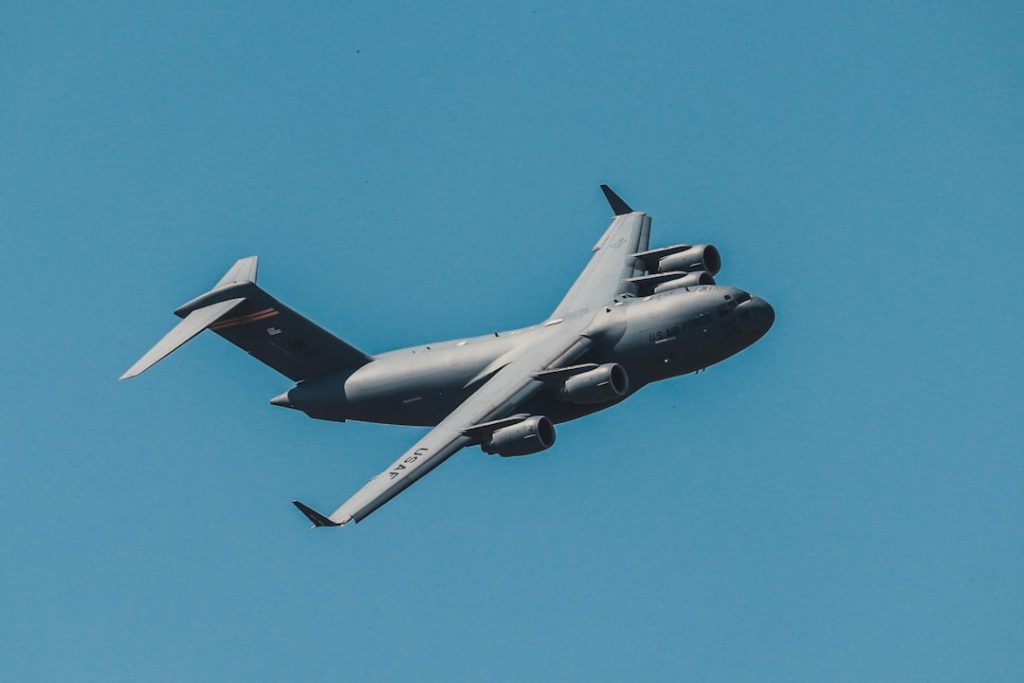The aviation industry is undergoing a transformative shift with the rise of electric aircraft, a development that promises to redefine air travel as we know it. Electric propulsion systems, which utilize batteries or hybrid technologies, are being explored as viable alternatives to traditional jet fuel engines. This transition is driven by the urgent need to reduce carbon emissions and combat climate change.
Companies like Pipistrel and magniX have already made significant strides in this area, with electric aircraft prototypes demonstrating the potential for quieter, more efficient flights. Pipistrel’s Alpha Electro, for instance, is a two-seat electric trainer that has garnered attention for its low operating costs and minimal environmental impact. The advantages of electric aircraft extend beyond environmental considerations.
They offer the potential for lower maintenance costs due to fewer moving parts compared to conventional engines. Additionally, electric aircraft can operate in urban environments with reduced noise pollution, making them suitable for short-haul flights and regional travel. The development of battery technology is crucial in this context; advancements in energy density and charging times are essential for making electric aircraft a practical option for commercial airlines.
As research continues, the prospect of fully electric commercial flights within the next decade becomes increasingly plausible, heralding a new era in aviation.
Key Takeaways
- Electric aircraft are on the rise, offering a more sustainable and efficient alternative to traditional fuel-powered planes.
- Sustainable aviation fuel is making a positive impact on air travel by reducing carbon emissions and promoting environmental sustainability.
- Artificial intelligence is playing a significant role in aviation, from improving safety and efficiency to enhancing the passenger experience.
- Advancements in aircraft design and technology are leading to more fuel-efficient and environmentally friendly planes.
- The future of in-flight entertainment and connectivity is evolving, with new technologies enhancing the passenger experience and connectivity options.
Sustainable Aviation Fuel and its Impact on Air Travel
Sustainable Aviation Fuel (SAF) has emerged as a critical component in the aviation industry’s efforts to achieve net-zero emissions by 2050. SAF is produced from renewable resources such as agricultural waste, cooking oil, and even carbon captured from the atmosphere. Unlike traditional fossil fuels, SAF can be blended with conventional jet fuel without requiring significant modifications to existing aircraft engines or infrastructure.
This compatibility allows airlines to reduce their carbon footprint while continuing to operate their current fleets. Major airlines like United and British Airways have already begun incorporating SAF into their operations, signaling a commitment to sustainability. The impact of SAF on air travel is profound.
By utilizing feedstocks that would otherwise contribute to waste, SAF not only reduces greenhouse gas emissions but also promotes a circular economy within the aviation sector. Studies have shown that SAF can reduce lifecycle carbon emissions by up to 80% compared to conventional jet fuel. Furthermore, as production scales up and technology advances, the cost of SAF is expected to decrease, making it a more accessible option for airlines worldwide.
The collaboration between governments, private companies, and research institutions is essential in fostering the development of SAF production facilities and ensuring that this sustainable alternative becomes a mainstream solution for air travel.
The Role of Artificial Intelligence in Aviation

Artificial Intelligence (AI) is revolutionizing various sectors, and aviation is no exception. From enhancing operational efficiency to improving passenger experiences, AI technologies are being integrated into multiple facets of the industry. One of the most significant applications of AI in aviation is predictive maintenance.
By analyzing data from aircraft sensors, AI algorithms can identify potential issues before they become critical, allowing airlines to perform maintenance proactively rather than reactively. This not only reduces downtime but also enhances safety and reliability. Moreover, AI is transforming the way airlines interact with passengers.
Chatbots and virtual assistants powered by AI are increasingly being used to handle customer inquiries, manage bookings, and provide real-time updates on flight statuses. These tools enhance customer service by offering immediate responses and personalized experiences. Additionally, AI-driven analytics can help airlines optimize pricing strategies based on demand forecasts and competitor pricing, ultimately leading to increased profitability.
As AI continues to evolve, its integration into flight operations, air traffic management, and passenger services will likely become more sophisticated, paving the way for a more efficient and customer-centric aviation landscape.
Advancements in Aircraft Design and Technology
| Advancements | Impact |
|---|---|
| Composite Materials | Reduced weight, increased fuel efficiency |
| Aerodynamics | Improved performance and stability |
| Avionics | Enhanced navigation and communication |
| Engine Efficiency | Lower emissions, higher power output |
The design and technology of aircraft are experiencing unprecedented advancements that promise to enhance performance, safety, and environmental sustainability. One notable trend is the development of blended wing body (BWB) designs, which offer improved aerodynamics compared to traditional tube-and-wing configurations. The BWB design allows for greater fuel efficiency by reducing drag and increasing lift-to-drag ratios.
Boeing’s experimental X-48B aircraft exemplifies this innovative approach, showcasing how unconventional designs can lead to significant improvements in fuel consumption. In addition to aerodynamic innovations, advancements in materials science are playing a crucial role in aircraft design. The use of lightweight composite materials such as carbon fiber reinforced polymer (CFRP) has become increasingly common in modern aircraft construction.
These materials not only reduce overall weight but also enhance structural integrity and resistance to corrosion. The Boeing 787 Dreamliner is a prime example of this trend; its extensive use of composites contributes to its impressive fuel efficiency and range capabilities. As manufacturers continue to explore new materials and design philosophies, the future of aircraft technology looks promising, with potential breakthroughs that could redefine air travel.
The Future of In-Flight Entertainment and Connectivity
In-flight entertainment (IFE) systems have evolved significantly over the years, transitioning from basic screens showing a limited selection of movies to sophisticated platforms offering a wide array of content and connectivity options. The future of IFE is poised for further transformation as airlines seek to enhance passenger experiences through personalized entertainment solutions. Streaming services like Netflix and Spotify are becoming increasingly integrated into IFE systems, allowing passengers to access their favorite shows and music during flights.
Connectivity is another critical aspect of the future of IFE. With advancements in satellite technology and onboard Wi-Fi systems, passengers can now stay connected while flying at cruising altitudes. Airlines are investing in high-speed internet access to meet the growing demand for connectivity among travelers.
This shift not only enhances the passenger experience but also opens up new revenue streams for airlines through premium connectivity services. As technology continues to advance, we can expect even more innovative solutions that cater to passengers’ needs for entertainment and connectivity during their journeys.
The Impact of 3D Printing on Aircraft Manufacturing

3D printing technology is revolutionizing aircraft manufacturing by enabling more efficient production processes and reducing costs associated with traditional manufacturing methods. This additive manufacturing technique allows for the creation of complex components with intricate geometries that would be challenging or impossible to achieve using conventional methods. For instance, GE Aviation has successfully utilized 3D printing to produce fuel nozzles for its LEAP engines, resulting in lighter components that enhance fuel efficiency.
The benefits of 3D printing extend beyond component production; it also facilitates rapid prototyping and design iteration. Manufacturers can quickly produce prototypes of new parts, test them for performance, and make necessary adjustments before moving into full-scale production. This agility accelerates the development cycle for new aircraft models and components, allowing manufacturers to respond more swiftly to market demands.
As 3D printing technology continues to mature, its integration into the aerospace supply chain will likely expand, leading to more sustainable manufacturing practices and innovative designs.
The Potential of Urban Air Mobility
Urban Air Mobility (UAM) represents a paradigm shift in transportation within metropolitan areas, leveraging advanced aerial vehicles to alleviate ground congestion and provide efficient travel options. The concept encompasses various forms of air transportation, including electric vertical takeoff and landing (eVTOL) aircraft designed for short-distance urban flights. Companies like Joby Aviation and Volocopter are at the forefront of developing eVTOL prototypes that aim to revolutionize urban commuting by offering on-demand air taxi services.
The potential benefits of UAM are substantial; it promises reduced travel times, decreased traffic congestion on roads, and lower emissions compared to traditional ground transportation methods. However, several challenges must be addressed before UAM can become a reality. Regulatory frameworks need to be established to ensure safety and integration with existing air traffic systems.
Additionally, public acceptance and infrastructure development will play crucial roles in determining the success of UAM initiatives. As cities explore innovative transportation solutions, UAM could become an integral part of urban mobility ecosystems in the coming years.
The Evolution of Airports in the Age of Aeroplane Revolution
Airports are evolving rapidly in response to technological advancements and changing passenger expectations in the age of the aeroplane revolution. Modern airports are increasingly designed with sustainability in mind, incorporating green building practices and renewable energy sources into their infrastructure. For example, San Diego International Airport has implemented solar panels that generate a significant portion of its energy needs while also investing in water conservation measures.
Moreover, airports are embracing digital transformation to enhance passenger experiences through seamless check-in processes and improved security measures. Biometric technologies such as facial recognition are being integrated into airport operations to expedite passenger flow while maintaining security standards. Additionally, smart airport initiatives leverage data analytics to optimize operations, from baggage handling to gate assignments.
As airports adapt to these changes, they will play a pivotal role in shaping the future of air travel by providing efficient, sustainable, and passenger-friendly environments that meet the demands of an evolving industry landscape.


